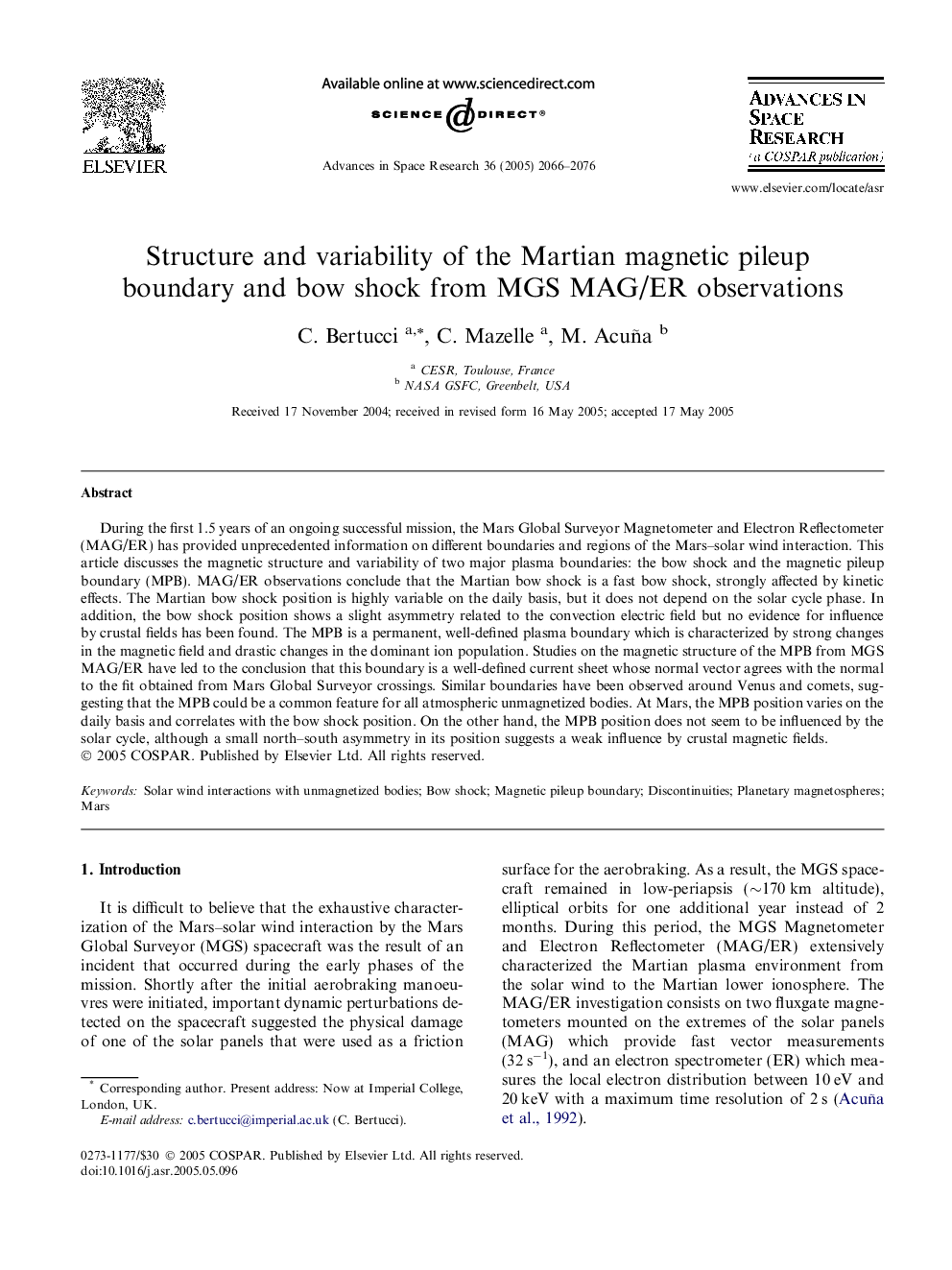| کد مقاله | کد نشریه | سال انتشار | مقاله انگلیسی | نسخه تمام متن |
|---|---|---|---|---|
| 1769570 | 1020287 | 2005 | 11 صفحه PDF | دانلود رایگان |

During the first 1.5 years of an ongoing successful mission, the Mars Global Surveyor Magnetometer and Electron Reflectometer (MAG/ER) has provided unprecedented information on different boundaries and regions of the Mars–solar wind interaction. This article discusses the magnetic structure and variability of two major plasma boundaries: the bow shock and the magnetic pileup boundary (MPB). MAG/ER observations conclude that the Martian bow shock is a fast bow shock, strongly affected by kinetic effects. The Martian bow shock position is highly variable on the daily basis, but it does not depend on the solar cycle phase. In addition, the bow shock position shows a slight asymmetry related to the convection electric field but no evidence for influence by crustal fields has been found. The MPB is a permanent, well-defined plasma boundary which is characterized by strong changes in the magnetic field and drastic changes in the dominant ion population. Studies on the magnetic structure of the MPB from MGS MAG/ER have led to the conclusion that this boundary is a well-defined current sheet whose normal vector agrees with the normal to the fit obtained from Mars Global Surveyor crossings. Similar boundaries have been observed around Venus and comets, suggesting that the MPB could be a common feature for all atmospheric unmagnetized bodies. At Mars, the MPB position varies on the daily basis and correlates with the bow shock position. On the other hand, the MPB position does not seem to be influenced by the solar cycle, although a small north–south asymmetry in its position suggests a weak influence by crustal magnetic fields.
Journal: Advances in Space Research - Volume 36, Issue 11, 2005, Pages 2066–2076